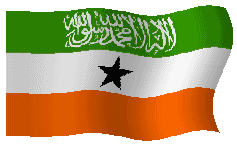

EXPLORATION AND MINING OPERATIONS
ASM OPERATIONS
Small-scale mining continues to contribute significantly to the socio-economic needs of Somaliland. The Ministry of Energy and Minerals (MoEM) put together small-scale mining project to enable the foreign and local Mining companies already in the country fulfil their small-scale mining obligation on a slimmer budget. Although introduction of the Small-scale mining production sharing agreement (PSA) has helped in improving small-scale mining activities and minimized associated environmental hazards, the MoEM continues to face significant environmental, safety, health, security challenges and community issues. This current activity report is preliminary findings of an ongoing small-scale mining operations in Somaliland.
The small-scale mining operation which traditionally involved the use of rudimentary tools such as pick, shovels, and spades to excavate mineral rich bedrock and unconsolidated materials has in recent times evolved in the use of sophisticated mining machinery (e.g. excavators, drilling machines, dozers and dump trucks). Small-scale mining activities are reported to contribute significantly to socio-economic development of Somaliland. Three small-scale mining sites in the Somaliland mining area, all of them in the Sahil and Tog-dheer regions.
Currently, there is a Somaliland Jade Mine operation activity by three companies: Big Rock Mining Company (BRM), Al-Kairat Mining Company and African Mining Company.

In the second half of 2018, Somaliland Ministry of Energy and Minerals suggested a system of stratification for small-scale mining activity, which was never actually applied, based on criteria such as the volume of production, the amount of capital invested, the community development agreement and the number of workers involved in mineral operations.
Accordingly in mining regulation on employment and training, there is a number of casual and technical labour in Somaliland Jade project (Tog-dheer region) the number of people depending on this activity for their livelihood are estimated between 240 and 300, including Somaliland Police Unit (SPU).

2. EXPLORATION ACTIVITIES
Geological exploration for natural resources is expensive and high risk. However, it opens new opportunities. Somaliland Ministry of Energy and Minerals is key ministry that could hugely contribute to the national economic development. Geological explorations and exploitation follow a sequence of multidisciplinary activities: reconnaissance, discovery, prospecting, and economic mining.
The exploration concept looks for a package of unique stratigraphic age, promising favorable rocks, and type structure that host certain groups of minerals. Last year, the MoEM implanted exploration project,Preliminary Survey of Reconnaissance) in three regions (Salal, Gabiley and Sahil), and the findings are as follows:
1. Abdulqadir Preliminary Survey of Reconnaissance Area
The Department of Minerals started a reconnaissance survey in Abdulqadir area in Salal Region of Somaliland. The site is located in close vicinity with the border with Ethiopia and Djibouti. A desk study work of the area was finalized using the existing geological data, literature review combined with the remote sensing analysis. Stream sediments points were identified and collected accordingly from 26th July to 15th August. Samples were dispatched for mineralogical analysis. During phase one of project the aim was to observe the nature of the area and its geological formations and to collect stream sediment samples. The geological units of the area include Basement (Proterozoic), Jurassic, Aden Volcanic and the recent Alluvial.

2. Dhagah- kuure Preliminary Survey of Reconnaissance Area
The Ministry of Energy and Minerals launched reconnaissance survey in Dhagax- kuure add date. The last time any geological study was conducted in northern of Arabsiyo district in Gabiley region was in 1957, and this recent project was the first reconnaissance project which the ministry implemented, building on the previous studies during British protectorate, One of the responsibility of the Ministry is to establish a set of roadmap to extract untapped mineral resources shown by previous studies as potential mineral anomalies. These minerals include Au, Cu, Pb, and Zn. Rocks within the area consist predominantly of palmitic rocks, granitic gneiss and Meta- Gabbro rock Formations. The survey revealed that mineralization occurs on the crest of an anticline. Surface Geochemical sampling was scheduled to be conducted during the period between 7th and 26th June, 2020.

Geologic Reconnaissance of the Gypsum Deposits of Somaliland
A reconnaissance geologic survey sampling of the Gypsum mineral deposits of southeast of Berbera was made by three geologists from Geological Survey section of the Mineral Resource Department under and their consultants from Khalifa Mining and Engineering (KME) and Ajham Energy and Mining Company under the auspices of the Technical Cooperation Administration of the Mineral Department. Many of the basic data in the report were obtained through field work that was conducted from 11th October to 26th October 2020, during the consultancy of the Tanzanian exploration geologists in Somaliland, but a large part of the report is based on earlier field work by British Geological Survey and by Ahmed M. Adan, Director of Petroleum Department, Somaliland Ministry of Energy and Minerals (MoEM).
The main objective was to collect Gypsum samples and to establish overview on the geological observation within the area. Thirty seven Gypsum samples were collected during the survey and process of despatch to the responsible laboratory are underway. The samples were from a pure, white grey coloured gypsum. At some places there is clay that cross-cuts the gypsum strata vertically, this feature is deformation from extension that make the platy bends to vertical bends. Dip: 85 d. direction: 100.

